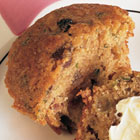
Omega-3s in Functional Foods
Some fats, such as omega-3s, provide solid health benefits. In fact, the FDA allows a qualified health claim stating: “Supportive but not conclusive research shows that the consumption of EPA and DHA omega-3 fatty acids may reduce the risk of coronary heart disease. One serving of (name of food) provides (x) grams of EPA and DHA omega-3 fatty acids.” While most Americans are unable to or do not wish to consume the recommended two servings of oily fish per week, it is possible to obtain the benefits of eating fish by supplementing the diet with omega-3-rich fish oils.The primary long chain omega-3 fatty acids found in fish oils are EPA (eicosapentaenoic acid) and DHA (docosahexaenoic acid). EPA has been shown to decrease platelet aggregation, promote vasodilatation, inhibit inflammatory response and reduce the occurrence of secondary heart attacks. DHA helps brain and retina development, minimizes depression, improves immune response and enhances cognitive functions. These conclusions are the results of almost 30 years of work that has encompassed several thousand studies, including well over a thousand clinical trials. Both EPA and DHA are found in one company’s refined menhaden oil. The product is odorless and bland-tasting and has been directly approved by the FDA as a GRAS food ingredient. It has the added advantages of being non-hydrogenated, non-GMO and is certified kosher.
Care must be exercised when handling any highly unsaturated oil such as omega-3 fish oil. The oil can be refrigerated for short periods of time, but the oil should be stored frozen for extended periods. After opening, the oil should be used immediately. Omega-3s should be added as close to the end of the process as possible. One key step in formulating with long chain omega-3 fish oils is, regardless of application, to first blend the oil with any other existing fat in the formula. It is also important to remember to keep the percentage of fat in the formula the same; the fish oil will replace a small amount of the existing oil in the formula. Fish oil can withstand most processing parameters, including but not limited to: baking times and temperatures, pasteurization, homogenization and shear. The menhaden oil may also be formulated with antioxidant systems, such as mixed tocopherols and tertiary butyl hydroquinone (TBHQ), which will enhance stability in storage as well as in final products. Chelating agents and additional antioxidants may also be added during ingredient addition, which will further minimize the potential for oxidation.
Fish oils containing omega-3 fatty acids perform best in refrigerated and frozen foods, products with a short shelflife and packaged foods. Application examples include salad dressings, spreads, tortillas, baked goods, ice cream, nutritional bars and yogurts.
“Omega-3s in Functional Foods,” Valerie Sanders, food applications scientist, OmegaPure, vsanders@omegapure.com, www.omegapure.com
—Summary by Richard F. Stier, Contributing Editor
Fiber in Beverages
This presentation describes a case study in which a beverage product is formulated using soluble fiber. The target product was to be a clear beverage that was shelf-stable and healthy and was clearly differentiated in the marketplace.The fiber source had to be soluble, easily dispersible, yield a clear product with acceptable viscosity and hit the target flavor profiles for sweetness. Color also played a role, as it could affect clarity (see graphic “Clarity and Color of Selected Soluble Fibers”).
The soluble fiber had to have a low molecular weight, be refined and be a concentrated source of fiber. This reduced the choices to digestive-resistant dextrin, polydextrose, inulin and resistant maltodextrin. After evaluating viscosity and color, the developers in this study decided that the best product to use would be resistant dextrin. This ingredient has low viscosity, is transparent in solution, is highly soluble, disperses easily and has low sweetness and low hygroscopicity. Resistant dextrin is also heat-stable, pH-stable, resistant to shear and unaffected by bakery yeasts or dairy cultures; that is, they will not ferment the product. Furthermore, the ingredient has 85% dietary fiber, excellent digestive tolerance, a low glycemic response, reduced insulin response, is sugar-free, low-calorie (only 2Kcal/g) and is a non-GMO product. As a prebiotic fiber, 75% of the product is fermented slowly in the large intestine.
When employed in processed products, resistant dextrin allows food product developers to remove part or all of the sugar, allowing label claims such as reduced-calorie, no-sugar-added or sugar-free. The ingredient provides mouthfeel and body and acts as a bulking agent. It also balances the flavor profile of high-intensity sweeteners. The addition of resistant dextrin in beverages at approximately 1.3% and 2.8% allows label claims of “good source of fiber” and “high source of fiber,” respectively. The manufacturer recommends the dextrin be used at 10g to 20g per liter when the goal is reduced- or sugar-free products. Although the focus of this presentation was a clear beverage, resistant dextrin may be used in dairy products, soups, sauces, bakery fillings, pasta, baked goods, meat products, savory dips and snacks.
“Formulating with Soluble Fiber: Functional and Nutritional Benefits,” Wendy Dalidowicz, senior technical service engineer, National Starch Food Innovation, wendy.dalidowicz@nstarch.com,
www.nationalstarch.com
—Summary by Richard F. Stier, Contributing Editor

Describing Water Activity
Water activity (Aw) is a measure of the energy status of the water in a system. It is defined as the vapor pressure of water above a sample over the vapor pressure of pure water at the same temperature. As water activity decreases, or as water becomes more “bound,” the water in a system is less available for microbiological and chemical reactions, which can impart stability to a food system. Factors that affect water activity are solute interactions, surface interactions and capillary effects.Instruments and methods used for measuring water activity include hair or polymer hygrometers, freezing point depression, isopiestic equilibration, electronic hygrometers, chilled mirror dew point sensors and near infrared prediction.
Since water activity is temperature-dependent, temperature should be reported with each water activity measurement. Changes in temperature will affect water activity differently for each product type, which can lead to moisture migration in a multi-component product if the temperature dependence of the water activity of the two components is not the same. Temperature affects water activity due to changes in water binding, dissociation of water, solubility of solutes in the water and the state of the matrix.
When measuring water activity, care must be taken to collect enough samples to ensure that the water in the sample will equilibrate with the vapor phase and that the sample will not pick up or lose moisture from the instrument chamber. There are some products that may require special sample preparation. These include emulsions (both water-in-oil and oil-in-water emulsions), coated samples and those with certain volatiles such as ethanol or propylene glycol. Water activity meters generally provide analysts with answers in less than five minutes.
When conducting a moisture analysis for a food product, the analysis should include both moisture content and water activity. Determining water activity using any one of the many meters is, however, more rapid and less complicated than determining percent moisture. Water activity is needed for safety and quality, while moisture content is need for labeling and texture. Water activity, not moisture content, provides information about how water will move in the food system, as water will migrate from areas of high water activity to areas of low water activity. The relationship between water activity and moisture content is called the moisture sorption isotherm. Each product has its own moisture sorption isotherm, which is a function of the different interactions between the water and solid components of the food at different moisture contents.
Water activity, as part of a complete moisture analysis, provides valuable information about product safety and quality and is central to formulating new, naturally preserved products
“What is Water Activity?” Brady Carter, applications engineer, Decagon Devices Inc., brady@decagon.com, www.decagon.com
—Summary by Richard F. Stier, Contributing Editor
Natural Reds in Beverage Systems
Color is an important element when it comes to how foods are accepted by consumers. The food developer must also select a system that will maintain its color during processing and distribution.With increasing consumer interest in natural foods, there has been a significant demand for stable natural colors. Companies such as Whole Foods, Trader Joe’s and Wal-Mart (on the horizon) have fueled this trend. The trick is taking those colors and ensuring that they have the stability to perform in food systems. There are many fruits and vegetables currently being used for color—products which deliver a wide range of colors (see chart “Red Colorants from Fruits and Vegetables”). These include grapes, pumpkins, elderberries, red cabbage, tomatoes and carrots. One benefit from using such colors is that the red pigments, or anthocyanins, contain phenolic compounds that have potential health benefits.
When developing products using colors, there is a stepwise progression that should be followed. The first step is to determine what color goes with the marketing strategy. Once this is done, developers need to consider how the color will be delivered (powder or liquid), what packaging system will be employed and what kind of shelflife the end product should have. Glass bottles will expose colors to light, whereas plastics may be permeable to oxygen. During the development process, it is important to understand the color of the base material. It is also important to understand the functional aspects of the system, such as pH, and whether there is a potential for ingredient interactions. Like it or not, shelflife studies of new formulations must be an essential element of the development process. These studies will allow the developer to determine the stability of the color in their products. If possible, accelerated studies may be done, assuming that these accurately predict what happens during normal distribution and storage.
The color supplier should be considered a partner and can serve as a resource during the development process. The supplier may also be able to develop customized products for specialized applications. This, however, is only one element that should be considered when selecting a color supplier. Other concerns are providing users with consistent products as required for production, offering fair and consistent pricing and giving services as needed. The word “partner” is the key.
“Natural Red Colorants in a Variety of Beverage Systems,” Stefan Hake, CEO, GNT USA, shake@gntusa.com, www.gntusa.com
—Summary by Richard F. Stier, Contributing Editor